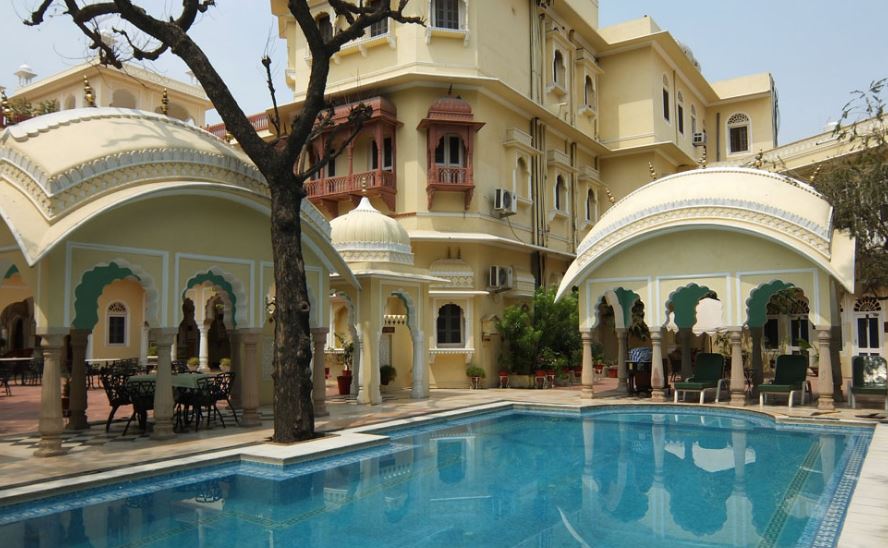
I have always felt that there has to be more to Rajasthan than castles, camels, and a multi-chromatic culture. This ancient royal settlement cannot be just a definition of grandeur. As I mull over these thoughts over an editorial feature on less explored palaces of Rajasthan, my boss asks me to make a quick trip to Alsisar and do a coverage of the Alsisar Mahal. Sometimes I do thank my job for bringing such sudden surprises. Needless to say, I give no second thoughts to the proposition.
The trip
I manage to book a good quality car with an experienced driver from Delhi to Alsisar who would be knowledgeable enough to take me around. It is quite a long drive from Delhi to this obscure little village sitting in a corner of the Jhunjhunu village. I say obscure because one would rarely find the mention of this place (except for the Magnetic Fields event) talking about its heritage, travel experiences, and so on. But obscurity is what my work thrives on.
It take us (my driver, photographer, and myself) nearly six hours. As we cross Haryana and start nearing the village, the greener skyline turn into dusty roads and sandy patches and dunes spread across. It is almost a desert, with the minimal sighting of human life, or probably because it is afternoon. Thankfully our chauffeur knows his way around and we can navigate through without the otherwise indispensable Google Map.
Alsisar- an introduction
The village of Alsisar is actually a part of the colorful region of Shekhawati, known for its resplendent palaces or ‘haveli’. Tucked somewhere amidst this artistic land, one can find the story of Alsisar. The highlight of this sleepy settlement is the Alsisara Mahal- the royal palace of the Alsisar family, who had made this their home since the 17th century. Standing as of today, the palace is turned into one of the most magnificent and luxurious hotels one can ever find and makes for a great retreat. I have seen quite a lot of palaces and royal residences in the state, but there is something extraordinary about it. Since its commercial venture, the hotel came to be known more like a ‘venue’ for the famous Magnetic Fields festival.
A tour of the palace
With its gorgeous architecture, fine artistry, and royal heritage, the Alsisar Mahal looks like a significant contributor to the pompous art of Shekhawati.
We start our tour of the palace, guided by a warm and friendly manager who has been a proud employee for over two decades. The walk from the entrance to the interiors through each room seems like traveling through the palace’s timeline, one century at a time. I am quite fascinated by the library with memoirs of past from around the globe when Rajasthan’s royalty defined the Indian culture to the world.
From the furnishing and upholstery to the wall décor, everything exudes an air of subdued sophistication, struggling to come out through its contemporary presentation to befit the millennial. The hallways and stairways might have been restored, but still, manage to hold you in its dated charm.
We end our tour at the palace terrace where a 360-degree view of the village below welcome us. The neighboring palaces and royal residences look like colorful blocks surrounded by a golden wall of sand dunes.
The village life
With our hospitality taken care of, courtesy, the ‘Mahal’, we make the most of our stay and explore the quaintness of Alsisar beyond the palace. The weather is balmy and I am glad that I booked a reliable AC cab in Delhi to take me around.
On one hand, is the opulent palace with a history not many know of. On the other side, there is the untouched rustic life of the village which not many have explored. While there are multitudes of palaces and cenotaphs with frescoed walls and fine stone carvings, there is also a regular, ordinary village life that runs parallel and in contrast to the ancient luxury. And somewhere the village life is what needs to be discovered more. As we walk through the village, the townscape feels like an open art gallery, with one structure beating the other with an extra element of paint, carving, or enamel work. And amidst all these, villagers go about their normal, rugged lives, defining their own existence sans any touch of royal greatness thanks to the best local painter and decorator.
By the end of the trip, I realize that there is no reason for a tourist to visit Alsisar. Because it is not a touristy place. And it is not a destination. It is a journey of morphing through time, for someone (like me) who is always in search for something beyond the known, seen, and heard. Like I said before, I knew there has to be more of Rajasthan than the touristy mazes of the other popular cities. In the least expected places with the least possible trappings, I end up finding the most enriching experience.

